Kourion
Q1785592Kourion (Greek Κούριον): ancient city on the southern coast of Cyprus.
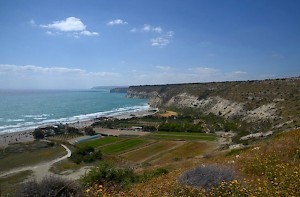
Situated on a high, rocky ridge along the south coast of Cyprus, Kourion was inhabited from Neolithic until the early Byzantine period. Traces of human activity from the fifth and fourth millenniums BCE have been identified along the Kouris river. In the twelfth century BCE, after the collapse of the Mycenaean palaces in Greece, Greek settlers arrived on this site, which was to become an important city state.
It is mentioned for the first time in an Assyrian text, in which king Esarhaddon (r.680-669 BCE) records the tribute he had received from the kings of Cyprus, including one “Damasus, king of Kourion”.note Later, the city was subject to the Egyptians and Achaemenid Persians.
In 499 BCE, king Stasanor of Kourion joined the Cypriot revolt against the Persians. However, when the Persians sent an army to restore order, Stasanor switched sides and contributed to the Persian victory. A century and a half later, one of his successors, Pasicrates, supported Alexander the Great during the siege of Tyre (332 BCE).
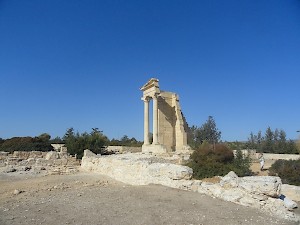
After the death of Alexander, Cyprus became part of the Ptolemaic Empire of Egypt and Kourion lost its independence. When the Romans annexed Egypt, Kourion flourished; the ruins that you can see today, are mostly from the Roman age. The sanctuary of Apollo Hylates, situated a bit to the west of the city, was one of the most important shrines on Cyprus.
In the fourth century, Kourion suffered from five heavy earthquakes, but the city was partly rebuilt. The episcopal palace from this age gave its name to the site, which is still known as Episkopi. The Arab raids of the mid-seventh century marked the end of the city.
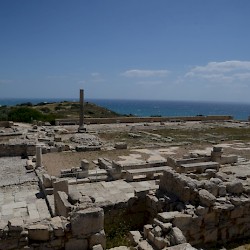 Kourion, Basilica |
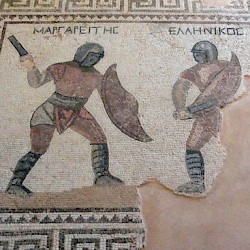 Kourion, House of the Gladiators, mosaic with gladiators |
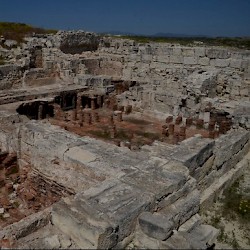 Kourion, Public baths |
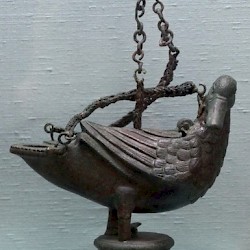 Kourion, Duck-shaped Roman lamp |